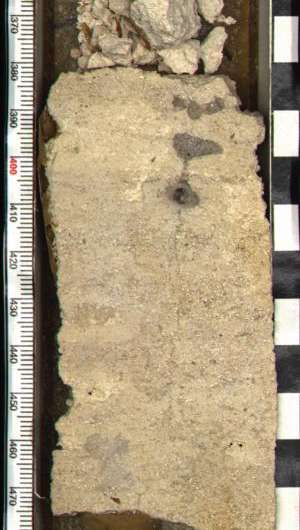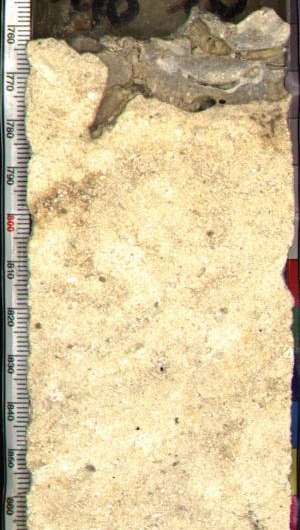Study on global carbon cycle may require reappraisal of climate events in Earth's history
A recent study of the global carbon cycle offers a new perspective of Earth's climate records through time. Scientists at the University of Miami (UM) Rosenstiel School of Marine and Atmospheric Science suggest that one of the current methods for interpreting ancient changes in the concentration of carbon dioxide in the atmosphere and oceans may need to be re-evaluated.
The UM Rosenstiel School researchers measured the abundance of carbon-12 and carbon-13 isotopes in both the organic matter and carbonate sediments found in a nearly 700-meter marine sediment core from the Great Bahama Bank. The analyses showed a change to lower amounts of the rare isotope of carbon (carbon-13) in both the organic and inorganic materials as a result of several periods of sub-aerial exposure during the Pleistocene ice ages, which took place over the past two million years.
"Without geological context, classical interpretations of this dataset would suggest that there was a significant change in global carbon cycling, or a very large change in the concentration of atmospheric CO2 during the past five-million years," said Amanda Oehlert, UM Rosenstiel School alumna and lead author of the study. "These findings show how important it is to understand the geological context of carbon isotope records."
Scientists refer to the global carbon cycle as the natural processes by which carbon is cycled through the different components of the Earth, including the mantle, atmosphere, plants, the oceans, and sediments.
The results showed that post-depositional changes in sediments could cause carbonate and organic values to covary through time, a process that had never been observed before, and has been considered impossible. The new findings suggest that similar trends in carbon isotopes values through time do not always provide conclusive information about the amount of CO2 ¬in the atmosphere or how carbon was cycled through the atmosphere and oceans.

Current scientific theory suggests that post-depositional physical, chemical, or biological processes produce contrasting carbonate and organic carbon isotope records. Currently, carbon isotope records of carbonate and organic material that show the same trends through time, or those that are highly correlated, are considered accurate records of changes in the global carbon cycle and concentrations of CO2 in the atmosphere and oceans.
"The observation that simultaneous changes in the amount of carbon-13 in carbonate and organic carbon isotope records can be caused by post-depositional changes is in direct contrast to current interpretations of these paired records," said Oehlert. "These findings highlight the importance of understanding where and how the sediments and organic matter were originally produced, how they were transported to the sea floor, and what physical, chemical or biological changes may have happened to them after they were deposited."

Scientists evaluate how the global carbon cycle changes through time by studying accumulations of carbonate skeletons and organic matter produced by marine organisms. Understanding the dynamics of the global carbon cycle is fundamental to estimations of atmospheric CO2, and consequently, how Earth's climate may have changed through geologic history.
The paper, titled "Interpreting carbonate and organic carbon isotope covariance in the sedimentary record," was published in the Aug 19 issue of the journal Nature Communications. The study's authors include Oehlert, currently a geologist at BP and Peter Swart, a professor at the UM Rosenstiel School's Department of Marine Geosciences.
More information: Link to paper: www.nature.com/ncomms/2014/140 … full/ncomms5672.html
Provided by University of Miami



















